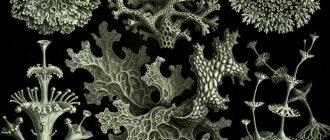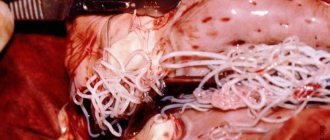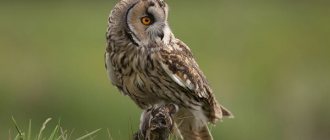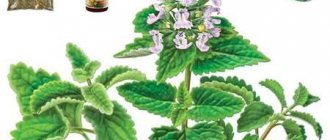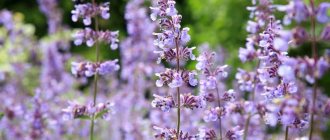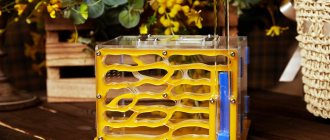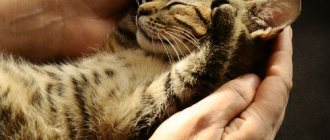Symbiosis is a form of relationship in which both partners or only one benefits from the other.
There is a wide range of examples of mutually beneficial symbiosis (mutualism) found in nature. From stomach and intestinal bacteria, without which digestion would be impossible, to plants (an example is some orchids, whose pollen can only be spread by one specific type of insect). Such relationships are always successful when they increase the chances of survival for both partners. The actions carried out during symbiosis or the substances produced are essential and irreplaceable for the partners. In a generalized sense, such symbiosis is an intermediate link between interaction and fusion.
In a broader scientific understanding, symbiosis is any form of interaction between organisms of different species, including parasitism (a relationship that is beneficial to one, but harmful to another symbiont). A mutually beneficial type of symbiosis is called mutualism. Commensalism is a relationship that is beneficial to one symbiont, but indifferent to the other, and amensalism is a relationship that is harmful to one, but indifferent to the other.
A type of symbiosis is endosymbiosis, when one of the partners lives inside the cell of the other.
The science of symbiosis is symbiology. The foundations of the doctrine of mutual assistance in the second half of the 19th century were laid independently by Russian naturalists P. A. Kropotkin and K. F. Kessler, as well as the German scientist Heinrich Anton de Bary, who proposed the terms “symbiosis” and “mutualism.”
Mutualism
Mutualism is a widespread form of mutually beneficial cohabitation, when the presence of a partner becomes a prerequisite for the existence of each of them.
A more general concept is symbiosis, which is the coexistence of different biological species. But unlike mutualism, symbiosis may not be beneficial to one of the partners, for example, in the case of parasitism.
The benefits that an organism receives when entering into a mutualistic relationship can vary. Often at least one of the partners uses the other as food, while the other receives protection from enemies or favorable conditions for growth and reproduction. In other cases, the species that wins food frees its partner from parasites, pollinates plants, or disperses seeds. Each member of a mutualistic couple acts selfishly, and beneficial relationships arise only because the benefits received outweigh the costs required to maintain the relationship.
Mutually beneficial relationships can be formed based on behavioral reactions, for example, as in birds that combine their own feeding with the dispersal of seeds. Sometimes mutualistic species enter into close physical interaction, as in the formation of mycorrhiza (fungal roots) between fungi and plants.
Close contact of species during mutualism causes their joint evolution. A typical example is the mutual adaptations that have formed in flowering plants and their pollinators. Mutualistic species often disperse together.
Commensalism
Types of relationships
There are several types of influence of living beings on each other. Positive - when one or both participants in the relationship benefit from it (for example, ants and aphids). Neutral - organisms do not affect each other in any way (for example, a deer and a forest bird). Negative - as a result of the relationship, someone is harmed (for example, the wolf and the hare).
Basically, for interacting animals and plants, the influence of relationships is different. That is, they bring harm to one, and benefit to the second, or they do not affect the first, but negatively on the second, and so on.
| Types of relationships | obligate and facultative symbiosis | competition, allelopathy | predation | parasitism | neutralism | commensalism | amensalism |
| Type of relationship | positive for both | negative for both | for one it is positive, for the other it is negative | for one it is positive, for the other it is negative | neutral for both | for one it is positive, for the other it is neutral | for one - negative, for the other - neutral |
Some forms of symbiosis and antagonism, as well as predation, harm organisms. Only two types of symbiotic relationships are entirely positive.
Commensalism
Depending on the nature of the relationship between commensal species, three types of commensalism are distinguished:
- the commensal is limited to using the food of an organism of another species (for example, in the convolutions of the shell of a hermit crab, an annelid worm of the genus Nereis lives, feeding on the remains of the cancer’s food);
- a commensal attaches to an organism of another species, which becomes a “host” (for example, a fish that sticks with a suction cup fin attaches to the skin of sharks and other large fish, moving with their help);
- The commensal settles in the internal organs of the host (for example, some flagellates live in the intestines of mammals).
An example of commensalism is legumes (for example, clover) and cereals growing together on soils poor in available nitrogen compounds, but rich in potassium and phosphorus compounds. Moreover, if the cereal does not suppress the legume, then it, in turn, provides it with an additional amount of available nitrogen. But such relationships can only continue as long as the soil is poor in nitrogen and the cereals cannot grow much. If, as a result of the growth of legumes and the active work of nitrogen-fixing nodule bacteria, a sufficient amount of nitrogen compounds accessible to plants accumulates in the soil, this type of relationship is replaced by competition. The result, as a rule, is the complete or partial displacement of less competitive legumes from the phytocenosis. Another variant of commensalism: unilateral assistance of a “nanny” plant to another plant. Thus, birch or alder can be a nanny for spruce: they protect young spruce trees from direct sunlight, without which spruce cannot grow in an open place, and also protect the sprouts of young fir trees from being squeezed out of the soil by frost. This type of relationship is typical only for young spruce plants. As a rule, when a spruce tree reaches a certain age, it begins to behave like a very strong competitor and suppresses its nannies.
Shrubs from the families Lamiaceae and Asteraceae and South American cacti have the same relationships. Possessing a special type of photosynthesis (CAM photosynthesis), which occurs during the day with closed stomata, young cacti become very overheated and suffer from direct sunlight. Therefore, they can only develop in the shade under the protection of drought-resistant shrubs. There are also numerous examples of symbiosis that is beneficial for one species and does not bring any benefit or harm to another species. For example, the human intestine is inhabited by many types of bacteria, the presence of which is harmless to humans. Similarly, plants called bromeliads (which include pineapple, for example) live on tree branches but get their nutrients from the air. These plants use the tree for support without depriving it of nutrients. Plants make their own nutrients rather than getting them from the air. Commensalism is a way of coexistence of two different species of living organisms, in which one population benefits from the relationship, while the other receives neither benefit nor harm (for example, silverfish and humans).
Symbiosis and evolution
Amensalism
The effect of a substance that mold releases on surrounding bacteria is an excellent example of amensalism.
Amensalism is an association between two organisms of different species, where one species is inhibited or killed while the other is unaffected. Amensalism can be accomplished in several ways. Most often, it occurs through direct competition for natural resources.
For example, if there is a small tree that is trying to grow next to a large tree, then the mature tree will most likely displace it in the competition for resources. It will intercept most of the light, and its mature root system will be much better at absorbing water and nutrients, leaving the seedling in an environment without sufficient light, water or nutrients and harming it.
However, a large tree will not be harmed by the presence of a young tree, since it cannot block the light of a taller tree, and the amount of water and nutrients it can absorb is so small that a mature tree will not notice the difference.
Amensalism can also occur if one species uses chemicals to suppress the growth of or kill other species. A very famous example of this type of amensalism led to the discovery of antibiotics known as penicillin. Alexander Fleming observed amensalism occurring on a plate of Staphylococcus aureus surrounding a contaminating spot of penicillin mold. He was the first to learn that mold releases a substance that kills the bacteria around it. Other scientists later developed ways to mass produce the bacteria-killing chemical we know as penicillin.
Sources
- https://chto-takoe.net/chto-takoe-simbioz/
- https://bioros.net/vsyo-obo-vsyom/chto-takoe-simbioz-i-parazitizm-v-zhizni-lyudey-priznaki-formy-i-vidy-simbioza-v-psihologii.html
- https://probakterii.ru/prokaryotes/raznoe/bakterii-simbionty.html
- https://www.pesticidy.ru/dictionary/Symbiosis
- https://www.syl.ru/article/171080/new_simbioz-primeryi-v-prirode-simbioz-jivotnyih-primeryi-simbioz-v-rastitelnom-mire
- https://KtoNaNovenkogo.ru/voprosy-i-otvety/simbioz-chto-ehto-takoe.html
- https://agrovetspb.ru/interesnoe/simbioz.html
- https://NatWorld.info/raznoe-o-prirode/simbioz-zhivyh-organizmov-v-prirode-opredelenie-tipy-i-primery
- https://fissi.ru/parasitism/
- https://doklad-referat.ru/%D0%9F%D0%B0%D1%80%D0%B0%D0%B7%D0%B8%D1%82%D0%B8%D0%B7%D0%BC_ (%D1%8D%D0%BA%D1%82%D0%BE%D0%BF%D0%B0%D1%80%D0%B0%D0%B7%D0%B8%D1%82%D1%8B, _%D1%8D%D0%BD%D0%B4%D0%BE%D0%BF%D0%B0%D1%80%D0%B0%D0%B7%D0%B8%D1%82%D1%8B) _%D0%B8_%D0%B5%D0%B3%D0%BE_%D0%BF%D1%80%D0%B8%D0%BC%D0%B5%D1%80%D1%8B
- https://allinteresting.ru/kommensalizm-primery-i-vidy/
- https://ru.thpanorama.com/articles/biologa/comensalismo-caractersticas-tipos-ejemplos.html
- https://FB.ru/article/204944/chto-takoe-simbioz-v-biologii-opredelenie-i-primeryi-simbioza
[collapse]
Symbiosis and evolution
In addition to the nucleus, eukaryotic cells have many isolated internal structures called organelles. Mitochondria, a single type of organelle, generate energy and are therefore considered the powerhouses of the cell. Mitochondria, like the nucleus, are surrounded by a double-layer membrane and contain DNA. On this basis, a theory of the emergence of eukaryotic cells as a result of symbiosis has been proposed. One of the cells absorbed the other, and then it turned out that together they cope better than separately. This is the endosymbiotic theory of evolution.
This theory easily explains the existence of a two-layer membrane. The inner layer originates from the membrane of the absorbed cell, and the outer layer is part of the membrane of the absorbed cell, wrapped around the alien cell. It is also well understood that mitochondrial DNA is nothing more than remnants of the DNA of the alien cell. So, many organelles of a eukaryotic cell at the beginning of their existence were separate organisms, and about a billion years ago they joined forces to create a new type of cell. Therefore, our own bodies are an illustration of one of the oldest partnerships in nature.
It should also be remembered that symbiosis is not only the coexistence of different types of living organisms. At the dawn of evolution, symbiosis was the engine that brought unicellular organisms of the same species into one multicellular organism (colony) and became the basis for the diversity of modern flora and fauna.
Examples of symbioses
Types of Relationships
These eye-catching clownfish hide in an anemone.
Clownfish and anemones live together in a mutual symbiotic relationship. They protect each other from predators. Photography by Mikael Quist/Moment/Getty Images Mutualistic relationships can be classified as obligatory
or
optional
. In obligatory reciprocity, the survival of one or both organisms depends on the relationship. In facultative reciprocity, both organisms benefit from but do not depend on their relationship for survival.
Examples of symbioses
- Endophytes live inside the plant, feed on its substances, releasing compounds that promote the growth of the host organism.
- Transportation of plant seeds by animals that eat the fruits and excrete the undigested seeds in droppings elsewhere.
Insects and plants
- Pollination of flowering plants by insects, during which the insects feed on nectar.
- Some plants, such as tobacco, attract insects that can protect them from other insects.
- The so-called “devil's gardens”: Duroia hirsuta trees serve as homes for ants of the species Myrmelachista schumanni, which kill the green shoots of other tree species that appear in the vicinity, thereby allowing Duroia hirsuta to grow without competition.
Mushrooms and algae
- Lichen consists of a fungus and an algae. The algae, through photosynthesis, produces organic substances (carbohydrates) that are used by the fungus, which supplies water and minerals.
The relationship between an algae and a lichen (lichenized) fungus in most cases represents an example of endoparasitosaprophytism. The fungus parasitizes algae that live in the lichen thallus and decomposes dead algae cells.
Animals and algae
- Yellow-spotted ambystoma can contain unicellular algae from the moment of its existence in the egg. In this case, algae, using animal metabolites, produce oxygen, which is used to produce chemical energy in mitochondria.
- The settlement of green algae in the grooves of the sloth's hair, which thus camouflages itself with a green background.
Mushrooms and plants
- Many fungi obtain nutrients from the tree and supply it with minerals (mycorrhiza).
Parasitism
Grasshopper infected with parasites
Now let’s imagine that the pathogenic microorganism still managed to gain a foothold in the human large intestine. The host serves as a habitat and food for bacteria, but the bacteria, in turn, cause disease in the host. This is an example of parasitism, or an association between two different species where the host is harmed. Not all parasites cause disease. Lice, ticks, fleas and leeches are all examples of parasites that do not usually cause disease directly, but they do suck the blood of their host and this causes some harm, not to mention discomfort.
Parasites can also act as vectors that transmit disease-causing pathogens to other animal species. The bacteria that causes bubonic plague is carried by rodents such as rats. The plague bacteria then infects the fleas that bite the rats. Infected fleas transmit the bacteria to other animals they bite, including humans. In this case, both the fleas and the bacteria are parasites, but the fleas are also a carrier that transmits disease-causing bacteria from the rat to other animals and humans.
Types of parasitism
There are many types of parasitism, and parasites can belong to several classifications based on their size, characteristics, and relationship with the host.
Ectoparasites
Ectoparasites live on the surface of the host's body.
Endoparasites
Endoparasites live inside the host's body. Many diseases are caused by numerous viruses, bacteria, protozoa, parasitic worms and other organisms.
Hemiparasites
There is a fairly large group of plants that have partially or completely lost the ability to absorb water and minerals from the soil, but have retained the ability to carry out photosynthesis. Such plants are called hemiparasites. Examples of them are plants of the genera eyebright (Euphrasia), rattle (Rhinantus), mystic grass (Pedicularis) of the family Scrophulariaceae and some others.
Buffalo Starlings (Oxpecker)
buffalo starlings
- birds that eat ticks, flies and other insects from cattle and other grazing mammals. The wolfhound gets food and the animal it cares for gets pest control.
buffalo starlings
are birds that are commonly found in the sub-Saharan African savanna. They are often seen sitting on buffalos, giraffes, impalas and other large mammals. They feed on insects that are commonly found on these grazing animals. Removing ticks, fleas, lice and other insects is a valuable service as these insects can cause infections and illnesses. In addition to removing parasites and pests, pipers also alert the herd to the presence of predators by sounding a loud warning. This defense mechanism provides protection to oxen and grazing animals.
